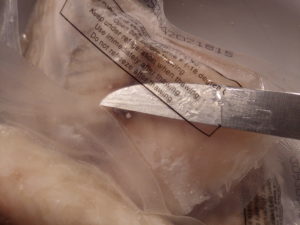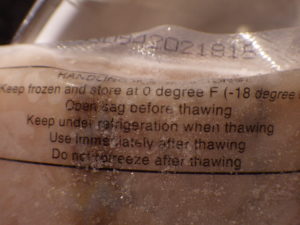Thawing Vacuum Packed Fish
go.ncsu.edu/readext?739811
en Español / em Português
El inglés es el idioma de control de esta página. En la medida en que haya algún conflicto entre la traducción al inglés y la traducción, el inglés prevalece.
Al hacer clic en el enlace de traducción se activa un servicio de traducción gratuito para convertir la página al español. Al igual que con cualquier traducción por Internet, la conversión no es sensible al contexto y puede que no traduzca el texto en su significado original. NC State Extension no garantiza la exactitud del texto traducido. Por favor, tenga en cuenta que algunas aplicaciones y/o servicios pueden no funcionar como se espera cuando se traducen.
Português
Inglês é o idioma de controle desta página. Na medida que haja algum conflito entre o texto original em Inglês e a tradução, o Inglês prevalece.
Ao clicar no link de tradução, um serviço gratuito de tradução será ativado para converter a página para o Português. Como em qualquer tradução pela internet, a conversão não é sensivel ao contexto e pode não ocorrer a tradução para o significado orginal. O serviço de Extensão da Carolina do Norte (NC State Extension) não garante a exatidão do texto traduzido. Por favor, observe que algumas funções ou serviços podem não funcionar como esperado após a tradução.
English
English is the controlling language of this page. To the extent there is any conflict between the English text and the translation, English controls.
Clicking on the translation link activates a free translation service to convert the page to Spanish. As with any Internet translation, the conversion is not context-sensitive and may not translate the text to its original meaning. NC State Extension does not guarantee the accuracy of the translated text. Please note that some applications and/or services may not function as expected when translated.
Collapse ▲There are several recommended safe methods for thawing food. One “best practice” is in the refrigerator. Most foods will thaw overnight, larger items may take several days (the general “rule of thumb” is one day for each five pounds of food). It’s recommended to place the food in its original wrapping on a plate or tray while thawing so that any drippings won’t potentially cross-contaminate other foods in the refrigerator.
One exception is when thawing vacuum packed fish. These fish should not be thawed in the package. The concern is the potential for the growth of botulism. This foodborne toxin can grow in an anaerobic (airless) environment which is created when the fish was vacuum packed. There is a specific type of botulism related to fish and will grow under refrigeration. Botulism is a potentially dangerous and deadly foodborne illness. Botulism needs the right temperature and time to grow within the food. If you thaw that the fish in the vacuum package in the refrigerator the conditions may be right for this botulism to grow. 
There is an easy solution. Either take the fish out of the package or simply cut a hole in the vacuum package to allow air inside before putting the fish into the refrigerator to thaw. This is no longer an anaerobic environment. So no longer risky.
Source: Cheryle Jones Syracuse, Family and Consumer Science Staff, cheryle_syracuse@ncsu.edu



